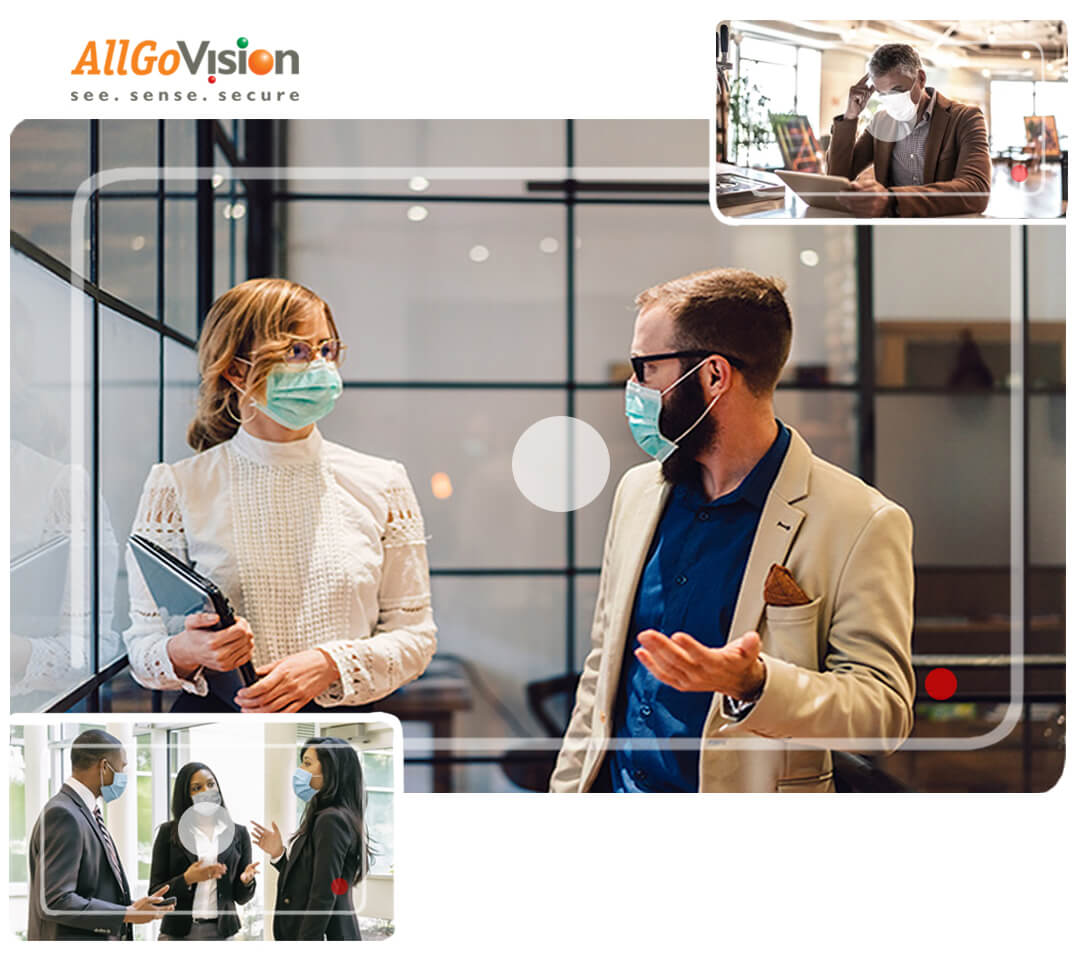
Employee Safety Re-defined post Covid19
Could AI & Analytics be the answer?
August 11, 2020
The Covid19 pandemic has upended almost all major professional trends, compelling company leaders to rethink key aspects of workforce planning, employee management, and organizational safety. With travel bans, restrictions on physical attendance and remote work, there is a sense of uncertainty in almost all organizations. However, since this is likely to be the new normal for the coming months, both employees and employers need to adjust and adapt to this reality.
The Covid19 pandemic will have a lasting effect on workplace trends, and once offices resume, the normal will get re-defined for employees and businesses.
But what exactly are the employees looking forward to when offices resume?
Well, in addition to meeting their colleagues and collaborating efficiently, they are also expecting a better workplace with higher safety standards that comply with the current norms. Employees are now looking forward to an automated and contactless workplace with just the right work life balance.
Over the next few sections, we will discuss these factors in detail, shedding more light on how leaders can implement structural changes in their organizations, resulting in better employee experiences.
Automated Systems to Reduce Infection Points
Since the world is still grappling with the pandemic, when offices resume, employees want organizations to take their safety seriously. This can be done by investing in contactless automation systems wherever possible.
Typically, employees want a solution that reduces physical contact at office entry and exit points and common areas like smoking zones and cafeterias. Instead of swiping access cards or authorizing attendance through fingerprint access, they are now advocating a solution that completely cuts down physical contact.
Contactless attendance management systems with facial recognition technology might be a great option here as it reduces contact and helps implement better safety protocols.
6-Feet Colleague Rule
Before the COVID era, workplaces were open and interactive. Many vouched for open-plan offices where a single desk was shared by multiple employees. Most employees were not as concerned by the physical distance either.
However, with the new normal in place, employees expect a revamped office environment where social distancing is practiced as much as possible.
Most of us are already practicing social distancing by keeping a physical distance of 2-3-feet in public places. However, in offices, this needs to be amped up to a minimum of 6-feet because office spaces are enclosed which require increased attention to safety.
While organizations can install Plexiglass or any other type of sneeze/cough guard to give employees additional insurance, employees expect their organizations to go the extra mile by investing in a system that will help enforce the social distancing more efficiently.
Reduced Physical Attendance
With lockdowns getting eased, many offices have already resumed operations. However, it probably goes without mention that companies cannot resume operations with the entire team.
Employees now prefer to work with smaller teams in different shifts. Ideally, companies should resume operations with 25% of the workforce and encourage work from home to a greater extent.
To avoid loopholes, they can invest in an advanced tool that automatically monitors employee count thereby limiting occupancy in the office building.
Enforce Masks
Masks have already become a part of our lives. So, when offices resume, it is expected that employees would be wearing masks most of the time and especially during conversations.
Since this is one of the biggest safety concerns, most employees want their organizations to mandate masks at workplace. Though this might spell discomfort for some and even impact social interactions, it is still one of the easiest ways to contain the spread of the infection.
Organizations can make this happen by using advanced mask detection tools that automatically detects individuals without masks. This way, they can make offices safer for all employees.
Sanitization & Regular Thermal Checks
Amid rapidly rising Covid19 cases, both employers and employees are worried about how the virus is likely to spread through workstations. While there is nothing much to do at this point, employees want their companies to take the concept of sanitization & thermal checks more seriously.
Since a clean workplace can inhibit the spread of this virus, employees expect their organizations to keep the frequently touched areas of the workplace clean. In addition to sanitization, automated thermal screening would certainly help curb the spread of the virus.
Empathy & Extra Care
Furthermore, in difficult times like these, employees want their employers to be more empathetic towards them and their unique situations. The easiest way to do this is by letting employees work at their own pace (both remotely and when offices resume).
Besides, employers should also put in efforts to ensure better hygiene standards in workplace. Washing hands and using sanitizers should be strongly encouraged after using restrooms, before and after having meals, and after touching garbage. Employers should also educate their staff about the basics of coughing and sneezing etiquette through videos, webinars, and live demonstrations.
Bottom Line
Since the pandemic is likely to last for many coming months, organizations should consider these employee requests even before they decide to resume offices. Adjusting to the new normal with these major structural changes might seem overwhelming at the beginning; but with the right technical solutions, organizations can certainly make way for a safe and balanced workplace where employees are both happy and genuinely satisfied.
Contact Us